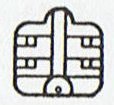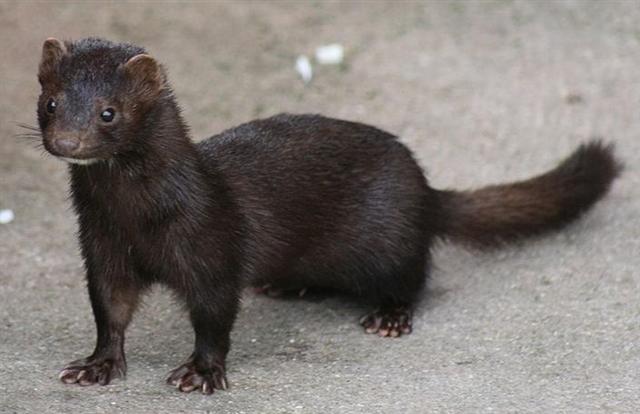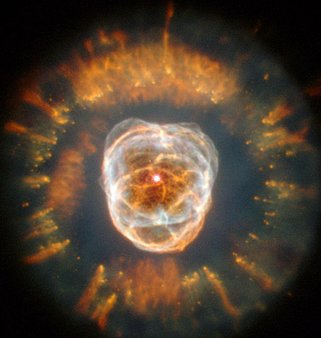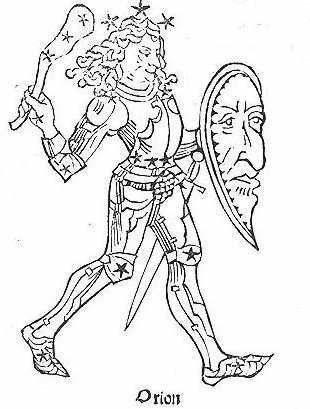A straight line has been drawn inside the head of the 'shark' (mago)
in Ga2-14,
which is a Strong
Sign surely intended to draw attention.
... Only the outline of an object or a
'person' should be drawn according to the rongorongo rules of
writing. In this respect the rongorongo system evidently stands
in opposition to the Mayan glyphs, where the inside is very
detailed. A few random examples:
|
Mayan glyphs |
 |
 |
 |
 |
|
Rongorongo glyphs |
 |
 |
 |
 |
This line is abruptly ending at what should be an
apex, possibly due to its location in Roman times:
|
MAY
3 |
4 |
5
(*45) |
6 |
7
(127) |
 |
 |
 |
 |
 |
|
Ga2-13 |
Ga2-14 |
Ga2-15 (45) |
Ga2-16 |
Ga2-17 (19 + 28 = 47) |
|
CLOSE
TO THE
SUN: |
|
WEZEN (Weight) = δ Canis Majoris
(107.1),
τ
Gemini (107.7),
δ
Monocerotis (107.9) |
no star listed (108) |
λ Gemini (109.4),
WASAT (Middle) = δ Gemini
(109.8)
*68.0 = *109.4 - *41.4 |
no star listed (110) |
ALUDRA (Virgin) = η Canis Majoris
(111.1),
PROPUS = ι Gemini
(111.4),
GOMEISA (Water-eyed) = β Canis Minoris (111.6)
*70.0 = *111.4 - *41.4 |
|
July
6 |
7
(188) |
8 |
9 |
10 |
|
°July 2 |
3
(184) |
4 |
5 |
6
(*107) |
|
'June 9 |
10
(161) |
11 |
12 |
13
(*84) |
|
... The
month, which takes its name from Juppiter the
oak-god, begins on June 10th and ends of July
7th. Midway comes St. John's Day, June 24th, the
day on which the oak-king was sacrificially
burned alive. The Celtic year was divided into
two halves with the second half beginning in
July, apparently after a seven-day wake, or
funeral feast, in the oak-king's honour
... |
|
"May 26 |
27 |
28
(148) |
29 |
30
(*70) |
|
DAY
107 - 64 = 43 |
44 |
45 |
46
(= 366 - 320) |
47 |
43 Vai Ngaere |
44
E Tai
E Teho E
ka
tao tauu ngu
e po e kiko e ka tutu toou oone |
45 Vai Ngaere
a
puku hehaheha |
46 E Hue E Renga Havini E
ka rangi atu koe kia nua
kia motu roa
ka vere mai taau taueve miritonu |
47 E Tai E
hare
hakangaengae i te tahu hanga rikiriki |
|
... Again the
additional text contains commands: 'Call out to
the mother (over there), to Motu Roa! Tear out
the closure of your earth-oven made from
seaweeds!' ...
Ragi. Ra'i, T. 1. Sky. 2. Palace. 3.
Prince. Henry. 1. Sky, heaven, firmament;
ragi moana, blue sky. 2. Cloud; ragipuga,
cumulus; ragitea, white, light clouds;
ragi poporo, nimbus; ragi hoe ka'i
cirrus (literally: like sharp knives); ragi
viri, overcast sky; ragi kerekere,
nimbus stratus; ragi kirikiri miro,
clouds of various colours. 3. To call, to shout,
to exclaim. Vanaga. 1. Sky, heaven, firmament,
paradise; no te ragi, celestial. 2.
Appeal, cry, hail, formula, to invite, to send
for, to notify, to felicitate, precept, to
prescribe, to receive, to summon; ragi no
to impose; ragi tarotaro, to menace, to
threaten; tagata ragi, visitor;
ragikai, feast, festival; ragitea,
haughty, dominating. 3. Commander. 4. To love,
to be affectionate, to spare, sympathy, kind
treatment; ragi kore, pitiless; ragi
nui, faithful. Churchill. Modoc, a
language used on the northwest coast of North
America: 'A single word, lagi, was used
both for the chief and for a rich man who
possessed several wives, horses, armour made of
leather or wooden slats, well-filled quivers and
precious firs. In addition to owning these
material assets, the chief had to win military
victories, possess exceptional spiritual powers
and display a gift for oratory.' (The Naked Man)
Vere. 1. Beard, moustache (vede
G); vere gutu, moustache; verevere,
shaggy, hairy, tow, oakum. Mgv.: veri,
bristly, shaggy, chafed (of a cord long in use).
Mq.: veevee, tentacles. Ta.: verevere,
eyelash. 2. To weed (ka-veri-mai, pick,
cut-grass T); verevere, to weed. P Mgv.:
vere, to weed. Mq.: veéveé,
vavee, id. 3. Verega, fruitful,
valuable; verega kore, unfruitful,
valueless, contemptible, vain, futile,
frivolous; tae verega, insignificant,
valueless; mataku verega kore, scruple.
Mgv.: verega, a design put into
execution; one who is apte, useful, having a
knowledge how to do things. 4. Ta.: verevere,
pudenda muliebria. Ma.: werewere, id.
(labia minora). Churchill. Sa.:
apungaleveleve, apongaleveleve, a
spider, a web. To.: kaleveleve, a large
spider. Fu.: kaleveleve, a spider, a web.
Niuē:
kaleveleve, a
cobweb. Nukuoro: halaneveneve,
a spider. Uvea: kaleveleve,
a spider. Mgv.: pungaverevere,
a spider. Pau.: pungaverevere,
cloth. Mg.: pungaverevere,
a cobweb. Ta.: puaverevere,
id. Mao.: pungawerewere,
puawerewere,
puwerewere,
a spider. Ha.: punawelewele,
a spider, a web. Mq.: pukaveevee,
punaveevee,
id. Vi.: lawa,
a fishing net; viritālawalawa,
a cobweb; butalawalawa,
a spider. Churchill 2.
Eve. 1. Placenta,
afterbirth (eeve). T Pau.: eve,
womb. Ta.: eve, placenta. Ma.: ewe,
id. Haw.: ewe, navel string. 2. The rear;
taki eeve, the buttocks; hakahiti ki
te eeve, to show the buttocks; pupuhi eve,
syringe. 3. The bottom of the sea. Churchill. |
The flexible character of Castor was followed by
the strong beak of Pollux in the east.
In the morning of the world, there was
nothing but water. The Loon was calling, and the old man who
at that time bore the Raven's name, Nangkilstlas,
asked her why. 'The gods are homeless', the Loon replied.
'I'll see to it', said the old man, without moving from the
fire in his house on the floor of the sea. Then as the old
man continued to lie by his fire, the Raven flew over the
sea. The clouds broke. He flew upward, drove his beak into
the sky and scrambled over the rim to the upper world. There
he discovered a town, and in one of the houses a woman had
just given birth ...
When Antares was
culminating (at 21) this should have indicated that the Sun
was turning into - to become like or to be - Castor.
'From now on', said Father Sun,
grieving over Phaeton, his fallen child, 'you shall be
Mink'. What meaning can this have for us? For such an
understanding between men and men, and other living
creatures too, we would need the kind of help King
Arthur had at hand: 'Gwryr Interpreter of Tongues, it is
meet that thou escort us on this quest. All tongues hast
thou, and then canst speak all languages of men, with
some of the birds and beasts.' This ability was also
attributed to Merlin and Gwyon, those masters of
cosmological wisdom whose names resound through the
legends of the Middle Ages. In general, all fabulous
communication was conceived as having such a range, not
merely the Aesopian fable with is flat, all-too-wordly
wisdom.

|
MAY
8 |
9 |
10
(130) |
11 |
12 |
13
(*53) |
 |
 |
 |
 |
 |
 |
|
Ga2-18 |
Ga2-19 |
Ga2-20 (50) |
Ga2-21 |
Ga2-22 |
Ga2-23 |
|
ρ Gemini (?) (112.1),
Eskimo Nebula = NGC2392 Gemini
(112.2)
ANTARES (α Scorpii) |
Al Dhirā'-5 (Forearm) /
Punarvasu-7 (Doublegood Pair) /
Mash-mashu-Mahrū-10 (Western One of the Twins)
CASTOR
(Beaver)
= α Gemini
*113.4 = *41.4 + *72.0 |
ANA-TAHUA-VAHINE-O-TOA-TE-MANAVA-7 (Pillar for
elocution)
υ
Gemini (114.0),
MARKAB PUPPIS = κ Puppis
(114.7),
ο
Gemini (114.8),
PROCYON
=
α
Canis Minoris
(114.9) |
α Monocerotis (115.4), σ Gemini (115.7)
*74.0 = *115.4 - *41.4 |
Mash-mashu-arkū-11 (Eastern One of the Twins)
κ Gemini (116.1),
POLLUX
= β Gemini
(116.2), π Gemini (116.9) |
AZMIDISKE = ξ Puppis
(117.4)
*76.0 = *117.4 - *41.4
|
 |
|
... In Hindu
legend there was a mother goddess called
Aditi, who had seven offspring. She is
called 'Mother of the Gods'. Aditi, whose
name means 'free, unbounded, infinity' was
assigned in the ancient lists of constellations
as the regent of the asterism Punarvasu.
Punarvasu is dual in form and means 'The
Doublegood Pair'. The singular form of this noun
is used to refer to the star Pollux. It is not
difficult to surmise that the other member of
the Doublegood Pair was Castor. Then the
constellation Punarvasu is quite
equivalent to our Gemini, the Twins. In far
antiquity (5800 B.C.) the spring equinoctial
point was predicted by the heliacal rising of
the Twins ... |
|
July 11 |
12
(193) |
13
(*114) |
14 |
15 |
16 |
|
°July 7 |
8 |
9 |
10 |
11 (*112) |
12
(193) |
|
'June 14 |
15 |
16 |
17
(168) |
18 |
19
(*90) |
|
"May
31 |
Te Maro
1 |
2 |
3
(154) |
4 |
5 |
|
On the twenty-fifth day [raa]
of the first month ('Vaitu Nui'), Ira and Makoi
set sail; on the first day [te raa po rae]
of the month of June ('Maro'), the bow [te
ihu] of Ira's canoe touched land again.
(E:17) - i
te raa po rae o te.maro.i tomo ai te ihu o te
vaka.o Ira. |
|
DAY
112 - 64 = 48 |
49 |
50 |
51 |
52 |
53 |
|
48 Hanga O
Maru
a
vave paupau |
49 E
Uta E
maunga
marengo e kaa
hohora toou kahu ritorito ka romiromi mai |
50 Ko Hanga Te
Pau A Ira |
51 Rano Kau
te
takitoka hakapiri te vaenga te mukomuko |
52 Mataveri O
Uta
a
hare paenga |
53 Mataver(i) O Tai
a
taura
akavenga nuahine |
|
Barthel (p. 87) "The 'bay of shadows' could not
be located, nor is there any information about
the additional name 'twisted wave' ...
Spread out [hohora] your bright cape!
Smooth out its wrinkles! (or, 'fold it up
again'? romiromi, compare also TAH. 'to
hide')."
Maru. Samoa: malū,
gentle, easy, soft. Tonga: malu,
loose, soft, mild, easy. Uvea, Nukuoro:
malu,
tender, soft. Hawaii: malu,
quiet. Futuna: malŭ,
tender. Nuguria: maru,
soft. Tahiti: maru,
soft, gentle, easy. Paumotu: hakamaru,
to grow milder. Rapanui: maruaki,
to decay. Churchill 2. Maru a Pó in
Tahiti was another [in addition to Ovakevake,
Hiva and Maori] 'place where
ákuáku supposedly lived before coming here'.
Vanaga. The Maori used the same word for
both solstices, marua-roa, 'long pit',
and applied the term also to the month or season
during which the Sun passed through its most
northerly or southerly declination. A qualifying
word such as takurua, 'winter', or
o-rongo-nui, 'summer', was usually appended
to denote which solstice was meant. When no
explanatory word was added marua-roa
seems to have signified the winter solstice...
Makemson. Viti: malua, to go gently, to
be in no hurry, by-and-by; vakamalua,
gently. Churchill 2. Maruaki, to feel
hungry, to be starving, hunger; he-topa te
maruaki, to feel hungry. Vanaga. Maruaki,
appetite, desire to eat, greedy, hunger,
fasting, famine, weak from hunger, dearth,
stavation; hakamaruaki, to starve; we
note in Motu maro, famine, dearth.
Churchill. Maruaki, to decay. Churchill
2. Marumaru, shady; ka-oho ki te kona
marumaru, go in the shade. Vanaga.
Marumaru, shade, thicket, somber, umbrella;
koona marumaru, sheltered spot, copse;
hakamaru, to cover with shade;
hakamarumaru, to shade. P Pau.: hakamaru,
to shadow. Mgv.: maru, shade, shadow,
obscurity. Mq.: maú, shade, shadow,
shelter. Ta.: maru, shade. Churchill.
Vave. Water in motion, a long wave;
pokopoko vave, trough of the sea; tai
vave, rough sea; vave kai kohe,
unapproachable. Churchill. Pau.: A fringing
reef. Mgv.: taivave, a rolling billow.
Ta.: vavea, a towering billow. Churchill.
Uta. Higher up (from the coast, or
from another place); i uta era, further
up, up there; ki î te îka i uta, as there
are lots of fish on the beach. Vanaga. 1.
Inland, landward; paepae ki uta, to
strand, to run aground; mouku uta,
herbage. 2. To carry; uta mai, to import;
hakauta, to give passage. Campbell.
Pau. 1. To run out (food, water):
ekó pau te kai, te vai, is said when there
is an abundance of food or water, and there is
no fear of running out. Puna pau, a small
natural well near the quarry where the 'hats' (pukao)
were made; it was so called because only a
little water could be drawn from it every day
and it ran dry very soon. 2. Va'e pau,
clubfoot. Paupau: Curved. Vanaga. 1.
Hakapau, to pierce (cf. takapau, to
thrust into). Pau.: pau, a cut, a wound,
bruised, black and blue. 2. Resin. Mq.: epau,
resin. Ta.: tepau, gum, pitch, resin.
(Paupau) Hakapaupau, grimace, ironry, to
grin. 3. Paura (powder), gunpowder. 4.
Pau.: paupau, breathless. Ta.: paupau,
id. 5. Ta.: pau, consumed, expended. Sa.:
pau, to come to an end. Ma.: pau,
finished. 6. Ta.: pau, to wet one
another. Mq.: pau, to moisten. Churchill.
Paua
or pāua
is the Māori name given to three species
of large edible sea snails, marine gastropod
molluscs which belong to the family
Haliotidae (genus Haliotis), known in
the USA as abalone, and in the UK as ormer
shells ... Wikipedia
Kahu.
Clothing, dress, habit,
cloth, curtain, vestment, veil, shirt,
sheet; kahu hakaviri, shroud; kahu
nui, gown; rima o te kahu,
sleeve; kahu rahirahi, muslin;
hare kahi, tent; horega kahu,
shirt; hakarivariva ki te kahu,
toilet; rakai ki te kahu, toilet;
patu ki te kahu, to undress; kahu
oruga, royal sail; kahu hakatepetepe,
jib; kahu nui, foresail; hakatopa
ki te kahu, to set sail; (hecki keho,
canvas T.) P Pau.: kahu, dress,
garment, native cloth. Mgv.: kahu,
cloth, stuff, garment, clothing. Mq.:
kahu, habit, vestment, stuff, tunic.
Ta.: ahu, cloth in general, vestment,
mantle. Chuchill. |
The distance from the Western One of the twins to the
Eastern One was 3 days, which we can compare with the
fact that there were 3 days also from the Front of the
Head of Ku to the Back of the Head of Ku:
|
BABYLONIAN ECLIPTIC CONSTELLATIONS: |
|
1 |
Mahrū-sha-rishu-ku |
Front of the Head of Ku |
β (Sheratan),
γ (Mesarthim) Arietis |
27.4 |
April 17 (107) |
|
2 |
Arku-sha-rishu-ku |
Back of the Head of Ku |
α (Hamal)
Arietis |
30.5 |
April 20 (110) |
|
82 |
|
10 |
Mash-mashu-Mahrū |
Western One of the Twins |
α (Castor)
Gemini |
113.4 |
July 12 (193) |
|
11 |
Mash-mashu-arkū |
Eastern One of the Twins |
β (Pollux)
Gemini |
116.2 |
July 15 (196) |
196 (July 15) - 110 (April 20) = 86 and 86 / 2 = 43, i.e. April 17 (107)
+ 43 = 150 could represent a place where there was a
reversal:
|
MARCH 24 |
25 (84) |
26 (*5) |
27 |
 |
 |
 |
 |
|
Ga1-3 |
Ga1-4 |
Ga1-5 |
Ga1-6 |
|
no star listed (67) |
Rohini-4 (Red One) /
Pidnu-sha-Shame-4 (Furrow of Heaven)
/
ANA-MURI-2 (Rear pillar - at the
foot of which was the place for
tattooing)
ALDEBARAN
= α Tauri
(68.2),
THEEMIN = υ² Eridani
(68.5) |
no star listed (69) |
no star listed (70) |
|
May 27 |
28 (148) |
29 |
30 (*70) |
|
°May 23 |
24 (144) |
25 (*65) |
26 |
|
'April 30 |
'May 1 (121) |
2 (*42) |
3 |
|
16 (471 = 314 * 1½) |
"April 17 (107) |
18 (*28) |
19 |
|
DAY 67 - 64 = 3 |
4 |
5 |
6 |
|
3
Hanga Roa
a tuki tukau |
4 Okahu
a uka ui hetuu |
5 Ra
Tahai
a uo |
6 Ahu
Akapu
a mata kurakura |
|
Ku hú á te huka-huka,
ku herohero á i roto i te ahi,
burning wood shows red in the fire.
Oka.
1. Lever, pole; to dig holes in the
ground with a sharpened stick, as was
done in ancient times to plant
vegetables; used generally in the
meaning of making plantations. 2. The
four sideways poles supporting a hare
paega. Okaoka, to jab, to
pierce, to prick repeatedly. Vanaga.
Digging stick, stake, joist; to prick,
to pierce, to stick a thing into, to
drive into, to slaughter, to
assassinate; kona oka kai,
plantation; pahu oka, a drawer.
Okaoka, a fork, to prick, to dig.
Okahia, to prick. Churchill. |
Precession would have pushed the stars ahead
with 83 right ascension days as counted from
Castor (*113) to Hamal (*30).
|
MARCH 28 (87) |
29 |
30 |
31 (*10) |
 |
 |
 |
 |
|
Ga1-7 |
Ga1-8 |
Ga1-9 |
Ga1-10 |
|
TABIT = π³ Orionis
(71.7), π² Orionis (71.9) |
π4 Orionis (72.1), ο¹ Orionis
(72.4), π5 Orionis (72.8)
*31.0 = *72.4 - *41.4 |
π¹ Orionis (73.0), ο² Orionis
(73.4),
HASSALEH = ι Aurigae
(73.6), π6 Orionis (73.9)
*32.0 = *73.4 - *41.4 |
ALMAAZ (The Male Goat) = ε Aurigae
(74.7),
HAEDUS I = ζ Aurigae
(74.8) |
|
May 31 |
June 1 (152) |
2 (*73) |
3 |
|
°May 27 |
28 (148) |
29 |
30 |
|
'May 4 |
5 (125) |
6 (*46) |
7 |
|
"April 20 (110) |
21 (111) |
22 (*32) |
23 |
|
DAY 71 - 64 = 7 |
8 |
9 |
10 |
|
7
Kihikihi Rau Mea
a rapa rau |
8
Renga A Tini
a toto renga |
9
Vai A Mei
a uhi kapokapo |
10 Rua A Ngau
a nua ngirongiro |
 |
|
Rega.
Ancient word,
apparently meaning 'pretty,
beautiful'. It seems to have been
used also to mean 'girl' judging
from the nicknames given young
women: rega hopu-hopu. girl
fond of bathing; rega maruaki,
hungry girl; rega úraúra,
crimson-faced girl. Vanaga.
Pau.: rega, ginger. Mgv.:
rega, turmeric. Ta.: rea,
id. Mq.: ena, id. Sa.:
lega, id. Ma.: renga,
pollen of bulrushes.
Churchill.
Tini.
To be at the zenith: ku-tini-á te
raá; middle of a journey, of a
period of time; te tini o te raá,
the middle of the day. Vanaga. 1. A
great number, innumerable, infinite,
indefinite. Tinitini,
million, billion. T Pau.:
tinitini, innumerable. Mgv.:
tini, a countless number,
infinite. Mq.: tini, id. Ta.:
tini, numerous. 2. Raa
tini, noon; tini po,
midnight; te tini te raa,
zenith; topa tini, abortion.
Churchill.
Toto.
1. Blood;
he-gaaha te toto mai roto mai te
haoa, blood gushes from inside
the wound; toto hatukai,
coagulated blood. 2. Rust; to rust.
Vanaga. Blood, bloody, to let blood,
to make bloody, to bleed, to
dissolve, rust; ariga toto,
florid, ruddy complexion;
hakatehe ki te toto, to bleed;
toto pine, to bruise; toto
ohio, iron rust. Mgv., Mq.:
toto, blood. Ta.: toto,
blood, sap. Churchill. Totoro
= to crawl; ki totoro te poki,
when the baby crawls. |
Heka rose *83 right ascension days after
Sirrah. When the Shield of Orion had begun
to rise together with the Sun in day 84
(Julian equinox) this had been *79 right
ascension days after Sirrah.
... Ecclesiastically, the
equinox is reckoned to be on 21 March (even
though the equinox occurs, astronomically
speaking, on 20 March in most years) ...

|





















